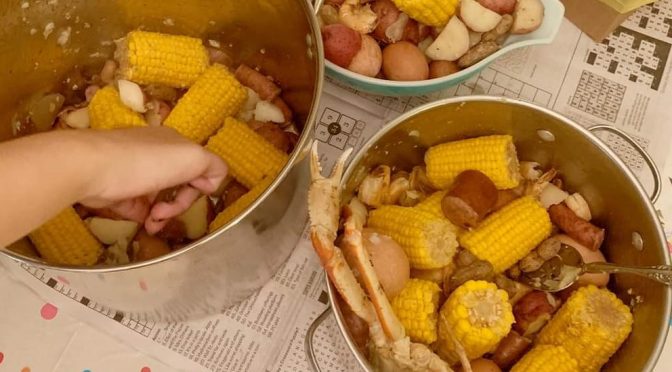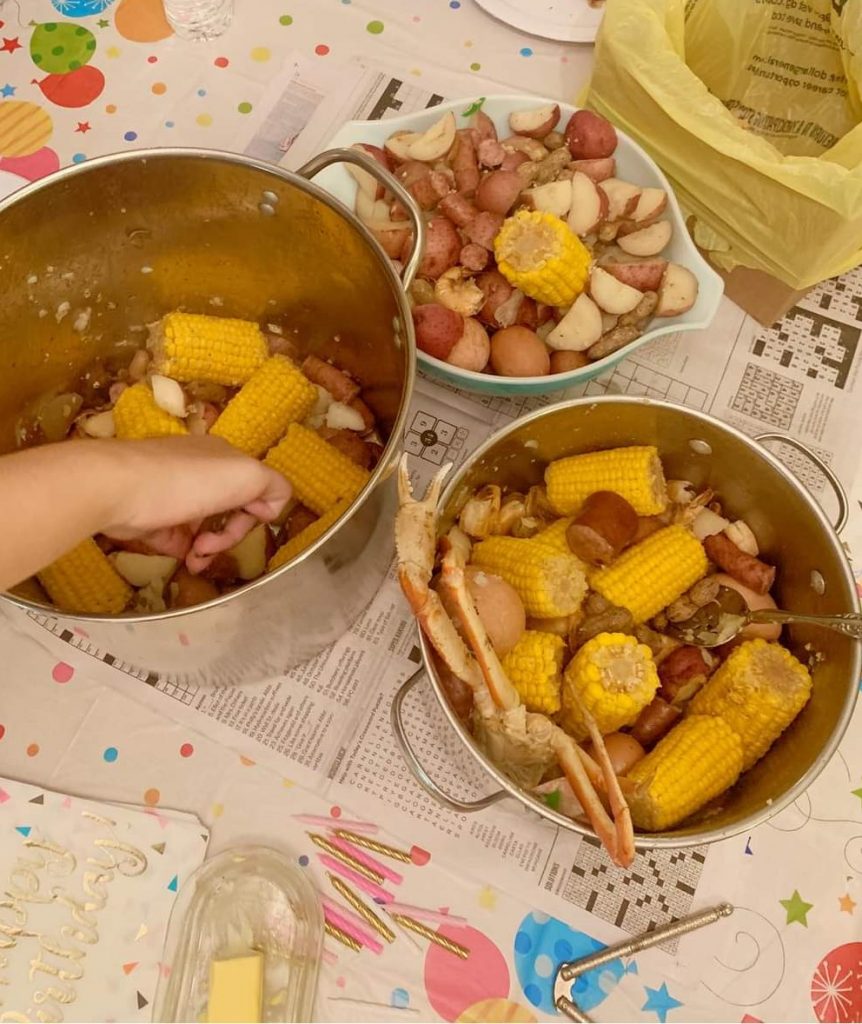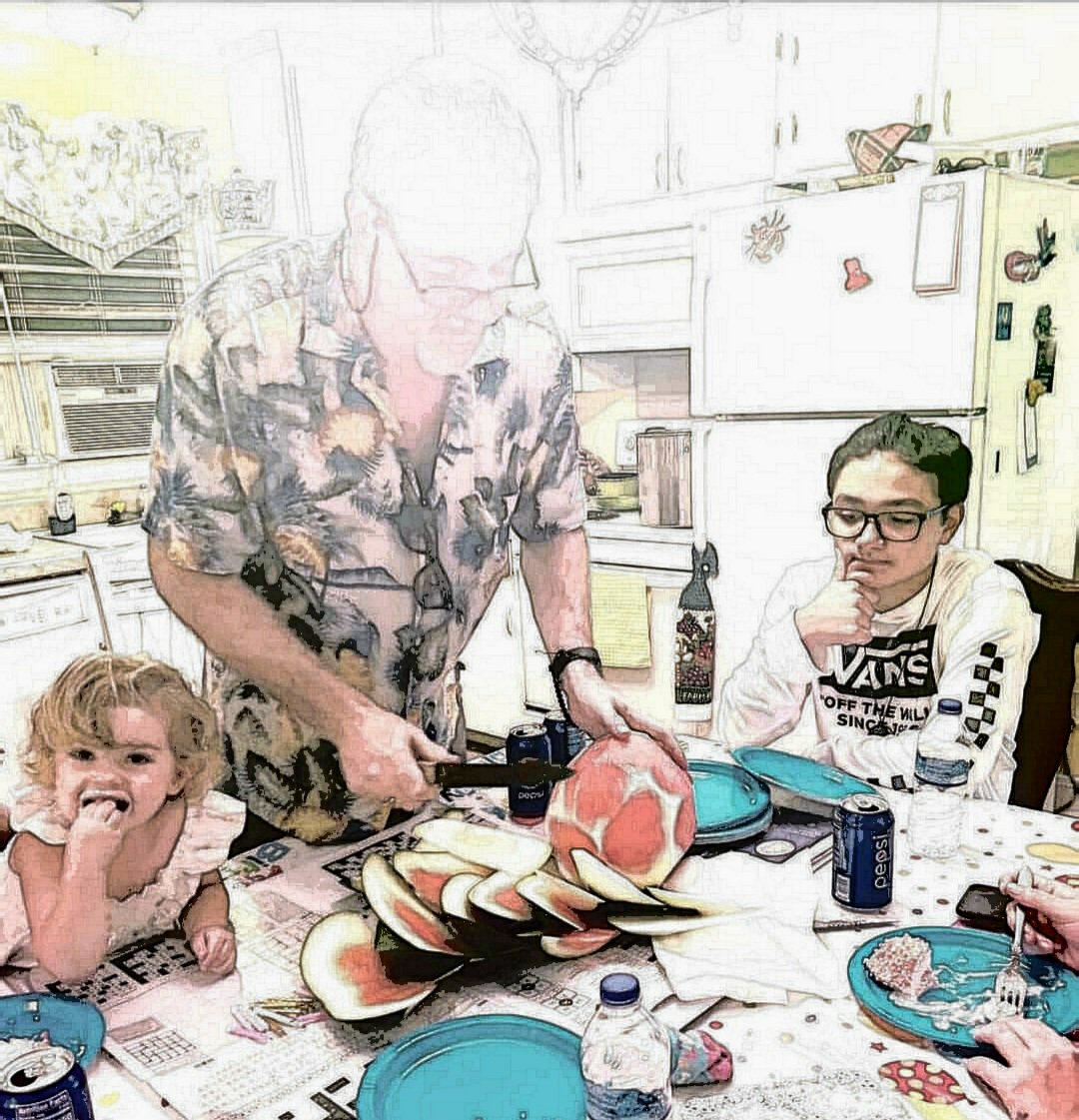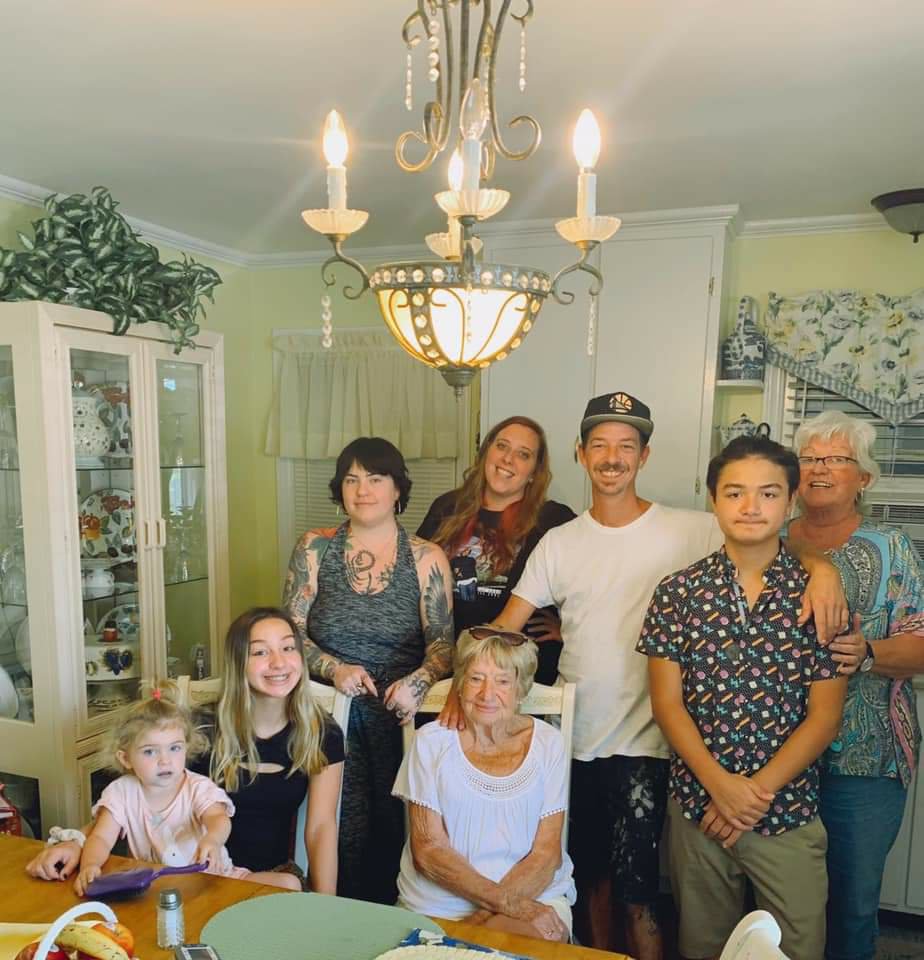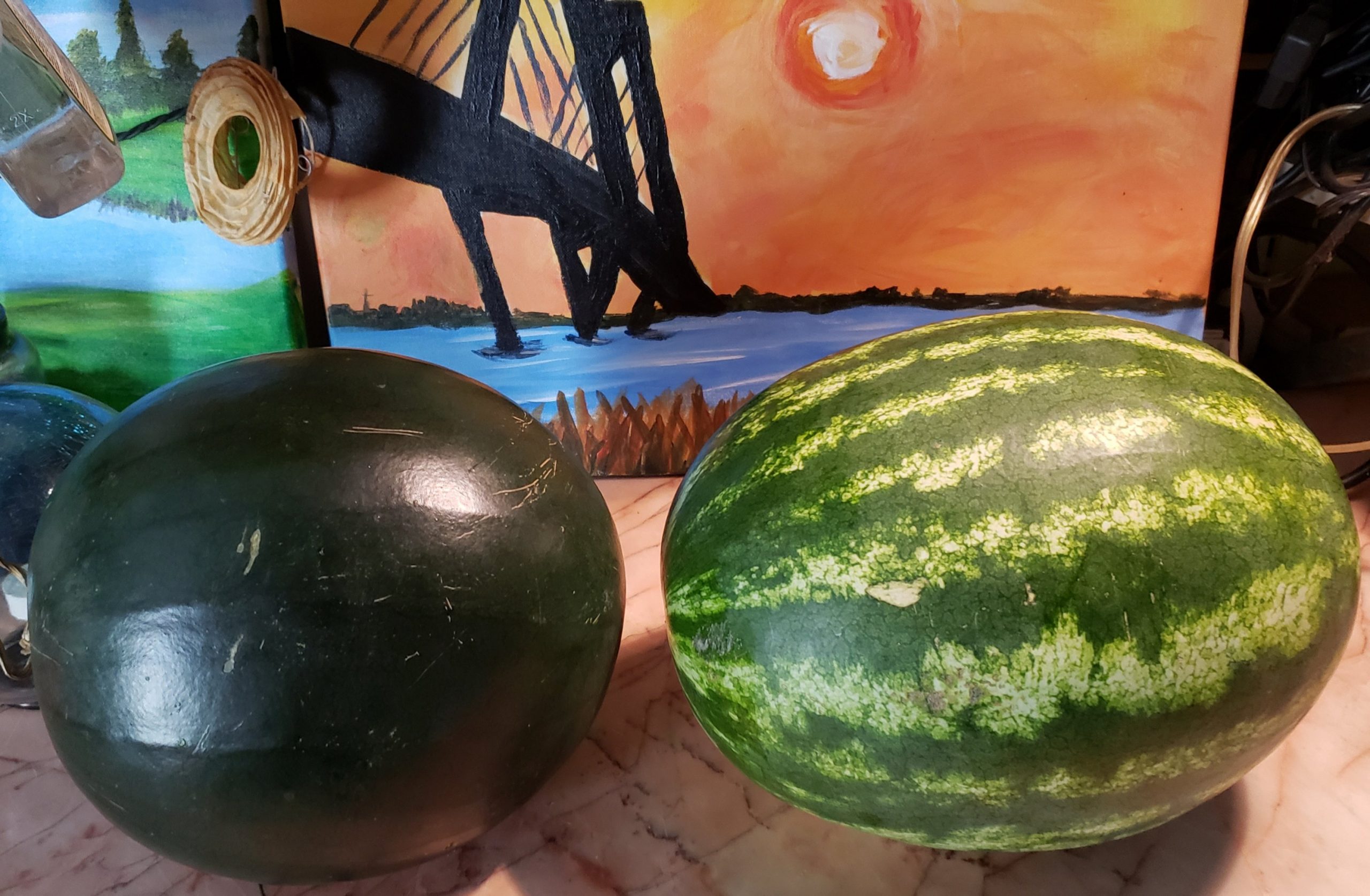I love learning new things! My Cousin Bruce made low-country seafood boil, and he adds All the usual suspects, potato, corn, sausage, shrimp, crab, and 2 new ingredients to me, peanuts and eggs, so ya have boiled peanuts & boiled egg too. Brilliant right! Have Ya ever thought it’s a soup, sorta, but you pour out all the liquid?
The Low Country boil is a one-pot meal for the masses and was originally called Frog-more Stew. … Many will serve the Low Country Boil on newspaper, which certainly allows for easy clean-up. The Low Country region of the United States stretches from the coastal plains of the Carolinas to the Georgia border.
Seafood boil is the generic term for any number of types of social events in which shellfish, whether saltwater or freshwater, is the central element. Regional variations dictate the kinds of seafood, the accompaniments and side dishes, and the preparation techniques (boiling, steaming, baking, or raw). In some cases, a boil may be sponsored by a community organization as a fund-raiser or a mixer. In this way, seafood boils are like a fish fry, barbecue, or church potluck supper. Boils are also held by individuals for their friends and family for a weekend get-together and on the holidays of Memorial Day and Independence Day. While boils and bakes are traditionally associated with coastal regions of the United States, there are exceptions.
There are two kinds of social gatherings in coastal Georgia and South Carolina that revolve around shellfish. One is very much like a Louisiana boil, usually involving shrimp, corn on the cob, sausage, and red potatoes, and sometimes ham, and is considered part of Lowcountry cuisine. Known variously as Frogmore Stew, Beaufort Stew, a Beaufort boil, a Lowcountry boil, or a tidewater boil, they tend to be a bit milder than their Louisiana cousins. For example, it is not unusual for a Lowcountry recipe to call for a mixture of hot and mild boil seasonings, whereas a Louisiana recipe may start with crab boil packets and add large amounts of cayenne pepper. While shrimp are most often used, crabs or crawfish may be included if available. This is also a bit different from a Louisiana boil, which usually involves just one kind of shellfish at a time.
Frogmore is the name of a community in the middle of St. Helena Island, near Beaufort, South Carolina. Although there are many versions of this dish around, the name Frogmore Stew was coined in the 1960s by Richard Gay, one of the owners of Gay Fish Company, circa 1948, on St. Helena Island. Frogmore Stew became far better-known after it was featured on the cover of Gourmet Magazine in the 1980s, and is enjoyed by all, with this name, to this day. In 2005, The Travel Channel featured Richard’s brother, Charles Gay, cooking Frogmore Stew in its popular program Taste of America with Mark DeCarlo.
The Low Country Boil may have possible influences from Louisiana, as there are some obvious similarities to some dishes of the cuisine of Louisiana. It showcases the same set of French, Spanish, African and Caribbean influences, including slave trade influences that Louisiana is known for. Meals for large gatherings of people would have to be made as quickly as possible with readily available foods. The boil was a quick and easy way to prepare all the foods at once.
The best attended function to feature Frogmore Stew occurs in July at the 10-day Beaufort Water Festival (in the 54 years of the festival it has grown to be the largest totally volunteer run festival on the south eastern coast), the event feeds 2,400, the recipe includes 1,200 lbs of shrimp, 2,400 ears of corn, 600 lbs of sausage, 72 oz of seafood seasoning and is served with 350 lbs of coleslaw, 250 gal of iced tea, 2,400 rolls and 90 watermelons.
The other kind of event is the Oyster Roast. Sheet metal or a fine mesh grill is placed over hot coals. Oysters are piled onto the grill (after having the mud washed off their shells). Wet burlap sacks are draped over the shells and the oysters are half grilled and half steamed. A shovel is used to scoop them onto nearby tables (plywood sheets on sawhorses works as well as anything). The shells have popped open (and are still hot), but the oysters are attached and just need a little coaxing to come free. This is particularly popular in the winter when the oysters are good and a hot fire keeps the coastal chill at bay.
Both of these events are often large social functions in which a neighborhood, family, or friends gather for fellowship. Music, drinking, and dancing, especially the Carolina shag, are also common at these events. The most famous example of such a function takes place in Columbia, South Carolina, in late November prior to the in-state Clemson and South Carolina football game, on South Waccamaw Street. source : https://en.wikipedia.org/wiki/Seafood_boil
